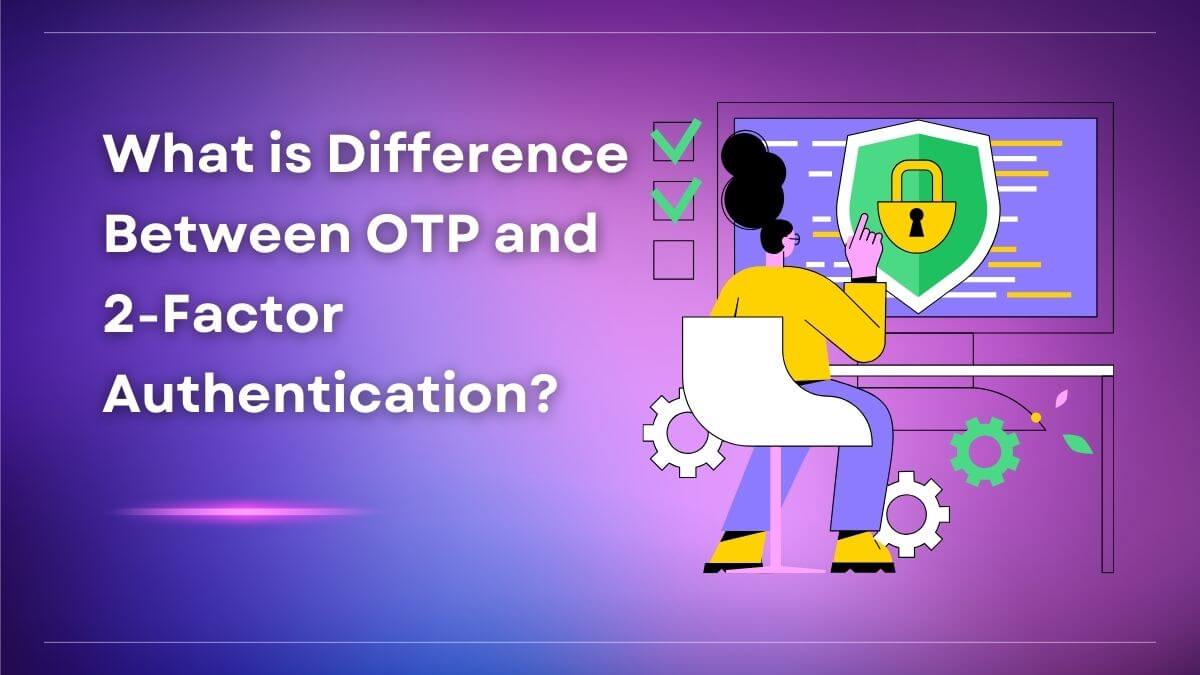What is Metaverse and How Does it Work?
The Metaverse is a term used to describe a digital universe of user-generated content. In this virtual world, people can interact and engage with each other using avatars.
A metaverse is a digital universe that people can explore and interact with using digital avatars, or digital representations of themselves. It’s similar to virtual reality, but instead of being a completely immersive, computer-generated environment, the metaverse is a mix of reality and virtuality. Think of it as a parallel world that exists alongside our own physical world.
People use avatars to navigate the metaverse and interact with other users. Avatars can be customized to look however you want, and they can be equipped with all sorts of virtual gear and abilities. In the metaverse, you can do things that are impossible in the real world, like fly or teleport.
The metaverse is constantly evolving and expanding. New features and experiences are being added all the time. And as more people join in and explore the metaverse, it becomes richer and more interesting.
In a recent interview with Wired, Mark Zuckerberg announced that Facebook is working on a project called the metaverse. The metaverse is a virtual world that is populated by avatars, or digital representations of people. Zuckerberg envisions the metaverse as a place where people can interact with each other and with digital content in a more realistic way than they can in the real world. He believes that the metaverse will eventually become a place where people spend most of their time and that it will have a profound impact on our economy and society.
The concept of the metaverse has been around for many years, but it has only recently begun to gain mainstream attention. Some experts believe that the metaverse will eventually replace the physical world as our primary reality. Others are sceptical, arguing that there is no need for a virtual world when we already have the real world.
What does it mean to live in the Metaverse?
In Neal Stephenson’s 1992 science fiction novel Snow Crash, the protagonist, Hiro Protagonist, describes the Metaverse as a three-dimensional computer-generated world that exists in real-time and can be accessed by anyone with a computer and a modem. The Metaverse is where people go to socialize, play games, and do business. It is a digital world in which people can create their avatars and interact with others in real-time.
Well, it means that a lot of the world we know and are used to is no longer true. The world that we have become accustomed to is a world where things like privacy and isolation are the norm, where people can exist only in their own little boxes, a world where you can only ever see or be seen by other things that belong to you. It offers full immersion, so it has no real-world concept. You interact with other avatars to mimic the real world, and you can navigate the virtual world through your computer.
No one can see you because they are in their own little box, and you are in your own little box, and there is nothing that links you together. This idea of privacy and isolation is not only damaging and destructive, and it’s no longer possible. That’s the old world, the old way.
Metaverse is a decentralised platform based on blockchain technology that enables anyone to create their own virtual world. This means that individuals can create their own digital identities and use them for various purposes. These purposes could include interacting with others in virtual worlds, buying and selling goods and services, or simply storing information.
As the use of Metaverse grows, it will likely become an increasingly important part of people’s lives. It has already been used for several interesting projects, including a virtual reality game called Crypto Space Commander and a social network called Akasha.

How does metaverse work?
Metaverse is built on the blockchain, which means that it is secure and transparent. Transactions on the Metaverse network are verified by miners, who are rewarded with Metaverse tokens for their efforts. This ensures that the network remains stable and reliable.
The metaverse is still in its early stages of development, but it is envisioned as a vast, immersive, and interactive virtual world that is accessible through different devices, such as VR headsets, AR glasses, and smartphones. It will be a place where people can work, play, socialize, and learn.
The idea is that people will come and experience it, much like people visit their hometown as kids. There is also an entire MMO genre of games where players are required to create their own content, share it with others, and socialise in this virtual community. The games have player ratings based on their content, and there is a monetary incentive for creating good content. Some of the more well-known MMOs are World of Warcraft, Star Wars Galaxies, and EverQuest.
The metaverse will be powered by a variety of technologies, including:
- Virtual reality (VR): VR headsets create a fully immersive experience by blocking out the real world and displaying a 3D virtual world in front of the user’s eyes.
- Augmented reality (AR): AR glasses overlay digital information onto the real world, such as directions, images, or text.
- Mixed reality (MR): MR combines VR and AR, allowing users to interact with both digital and physical objects in the same space.
- Blockchain: Blockchain is a secure and transparent way to record transactions and ownership of digital assets. It will be used to create a secure and decentralized metaverse.
- Artificial intelligence (AI): AI will be used to create realistic virtual worlds and characters, as well as to provide personalized experiences for users.
What is Metaverse Blockchain?
The Metaverse blockchain is a permissionless blockchain that records an individual’s identity, transaction history, content ownership, and content value. Using the blockchain, the company has been focused on building a blockchain ecosystem that includes several layers, including DApps, IoT devices, virtual and real-world assets, and real-world assets.
Metaverse aims to combine these features to create a new type of decentralized digital economy. Users can interact with DApps within the Metaverse blockchain through virtual assets and can engage in real-world business and life with real-world assets. DApps are built on the Metaverse blockchain, where users can interact with the blockchain through a browser interface, mobile applications, or smart contract interfaces.
There are several types of DApps, including gaming DApps, trading DApps, and other DApps. Trading DApps allows users to trade or exchange assets using blockchain technology and smart contracts. Gaming DApps can be developed to run games within the Metaverse blockchain, including MMO, MOBA, or MMORPG games. Metaverse focuses on developing the social layer of its platform, allowing its users to publish, share, exchange, and consume content.
Does it Make Sense Investing in Metaverse?
In recent months, the market has seen a huge price surge in the digital asset world of Ethereum and the cryptocurrency market. The world has seen a rise in new cryptocurrencies and digital assets in the last few years. The overall market has risen with the rise of Bitcoin, Ethereum, and other cryptocurrencies. While this might sound amazing to the casual observer, it’s not hard to see why this particular surge has happened. Most cryptocurrencies and digital assets began with Bitcoin and Ethereum, and as time progressed, they have developed, gained recognition, and become their separate entities.
It is anticipated that the value of the metaverse will exceed 800 million dollars by 2028. When you consider Facebook’s move into the metaverse and its $10 billion investment towards its expansion of it, this makes perfect sense. Buying a piece of the metaverse may be a good decision if you are interested in making an investment that is as wise as others have made in the past.
While the metaverse and cryptocurrencies are connected in certain ways, they are also separate asset classes. Both of these asset classes hold the potential for significant profits but also pose the danger of losing everything invested. However, the question of whether or not they are viable investment possibilities, in addition to the potential benefits and drawbacks of each, is still very much up for dispute.
Security and Privacy Concerns with Metaverse
Three factors affect metaverse user privacy: Private data, behaviour, and conversations. Due to our worries, each of these industries will offer platforms with more data than they already have, bringing new and heightened risks. Personal information from social networking sites is already used for doxing, releasing a victim’s private information for extortion or public shaming online.
How will we avoid doxing when the metaverse exposes more personal information to platforms and other users? Personal and sensitive information will leak across the metaverse, including user behaviours and physiological features. Due to the increased connectivity between the virtual and physical worlds, getting goods in the metaverse that are hard or impossible to get on the Internet will be simpler.
User behaviour poses privacy risks. The metaverse will offer unprecedented opportunities to leverage online immersive experiences and interactions to perpetrate offline (i.e. real) damages and frauds. During the COVID-19 outbreak, social engineering attacks accounted for most internet attacks. Social engineering will become more convenient, potent, and frequent with the metaverse.
Metaverse privacy problems go beyond social engineering. This includes espionage and stalking. In real life, eye spotting, stalking, or harassing a person may be hindered by physical limits, such as the need to remain near the target and move to specified regions, which may be costly (e.g. time, money). Punishments are typically effective deterrents. In the metaverse, these factors don’t apply, making assaults easier.
This applies to various online attacks, some of which are done by several coordinated people and will rise exponentially in the metaverse. Harassment, shaming, cyberbullying, and video call bombing are examples of harassment.
Several of these are “denial of service” tactics. A few unpleasant individuals may ruin online games, one of the metaverse’s primary uses. Many cyber-aggressions that start on one platform or in relation to a specific problem (e.g., a game) can expand to others, absorbing new users and groups, as with the #Gamergate campaign or in Second Life. These vulnerabilities will be increased in a metaverse with many links across groups, places, and applications.
Conclusion
In conclusion, Metaverse is an open-source, public blockchain system that aims to provide users with a secure online platform where they can issue and trade virtual currencies such as ether, XRP, and other digital assets. In other words, the Metaverse is similar to the Ethereum Blockchain but has some key differences.
The metaverse is not limited to a single experience of any kind. Instead, it refers to a progression of fully immersive digital experiences that will be available to users in the distant future. These experiences will allow users to participate in a wide variety of activities within wholly digital environments. This may entail taking part in a big virtual reality multiplayer game accessed through a VR headset. Alternatively, it could mean experiencing integrated digital and physical locations, such as location-specific immersive digital content from business users who visit through digital glasses or smartphones.

